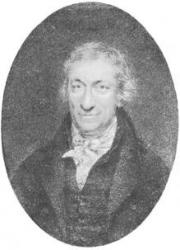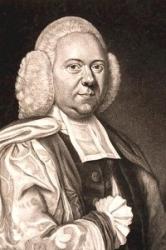Planning worship?
Check out our sister site, ZeteoSearch.org,
for 20+ additional resources related to your search.
- |
User Links
Search Results
Come and See Where Jesus Lay
Author: Timothy Dudley-Smith Appears in 1 hymnal Hymnal Title: Calvin Hymnary Project First Line: [Come and See Where Jesus Lay] Text Sources: A House of Praise (Hope Publishing Company,, 2003)
Come and See Where Jesus Lay
Come, see the place where Jesus lay
Author: Thomas Kelly Meter: 8.8.6.8.8.6 Appears in 57 hymnals Hymnal Title: The Hymnal Lyrics:
Come, see the place where Jesus lay,
And hear angelic watchers say,
"He lives, who once was slain:
Why seek the living midst the dead?
Remember how the Savior said
That he would rise again."
O joyful sound! O glorious hour,
When by his own Almighty power
He rose and left the grave!
Now let our songs his triumph tell,
Who burst the bands of death and hell,
And ever lives to save.
The First-begotten of the dead,
For us he rose, our glorious Head,
Immortal life to bring;
What though the saints like him shall die,
They share their Leader's victory,
And triumph with their King.
No more they tremble at the grave,
For Jesus will their spirits save,
And raise their slumbering dust:
O risen Lord, in thee we live,
To thee our ransomed souls we give,
To thee our bodies trust.
Amen.
Topics: Easter Day Used With Tune: INNSBRUCK
Come, see the place where Jesus lay
MAGDALEN COLLEGE
Meter: 8.8.6.8.8.6 Appears in 23 hymnals Composer and/or Arranger: William Hayes, 1706-1777 Hymnal Title: CPWI Hymnal Tune Key: D Major Incipit: 13516 44323 45671 Used With Text: Come see the place where Jesus lay
MAGDALEN COLLEGE
[Come see the place where Jesus lay]
Appears in 1 hymnal Composer and/or Arranger: Samuel Woodcock Hymnal Title: Heavenly Sunlight Used With Text: Come See the Place
[Come see the place where Jesus lay]
Come see the place where Jesus lay
Hymnal: A Church Hymn Book #67 (1861) Hymnal Title: A Church Hymn Book Topics: Easter Languages: English
Come see the place where Jesus lay
Come see the place where Jesus lay
Author: Thomas Kelly Hymnal: A Treasury of Hymns #53 (1953) Hymnal Title: A Treasury of Hymns Languages: English Tune Title: INNSBRUCK
Come see the place where Jesus lay
Come see the place where Jesus lay
Hymnal: Book of Hymns and Tunes, comprising the psalms and hymns for the worship of God, approved by the general assembly of 1866, arranged with appropriate tunes... by authority of the assembly of 1873 #354a (1874) Hymnal Title: Book of Hymns and Tunes, comprising the psalms and hymns for the worship of God, approved by the general assembly of 1866, arranged with appropriate tunes... by authority of the assembly of 1873 Languages: English
Come see the place where Jesus lay
Samuel Wesley

1766 - 1837 Person Name: S. Wesley, 1766-1837 Hymnal Title: Church Hymns Composer of "EXETER" in Church Hymns Samuel Wesley; b. Feb. 24, 1766, Bristol; d. Oct. 11, 1837, London; composer and organist. Son of Charles Wesley, grandson of Samuel Wesley, 1662-1735
Samuel Wesley
William Hayes

1706 - 1777 Person Name: William Hayes, 1706-1777 Hymnal Title: CPWI Hymnal Composer of "MAGDALEN COLLEGE" in CPWI Hymnal William Hayes (26 January 1708 (baptised) – 27 July 1777) was an English composer, organist, singer and conductor.
Hayes was born in Gloucester. He trained at Gloucester Cathedral and spent the early part of his working life as organist of St Mary’s, Shrewsbury (1729) and Worcester Cathedral (1731). The majority of his career was spent at Oxford where he was appointed organist of Magdalen College in 1734, and established his credentials with the degrees of B.Mus in 1735 and D.Mus in 1749. (He was painted by John Cornish in his doctoral robes around 1749.) In 1741 he was unanimously elected Professor of Music and organist of the University Church. He presided over the city’s concert life for the next 30 years, and was instrumental in the building of the Holywell Music Room in Oxford in 1748, the oldest purpose-built music room in Europe. He was one of the earliest members of the Royal Society of Musicians, and in 1765 was elected a ‘privileged member’ of the Noblemen’s and Gentlemen’s Catch Club. He died in Oxford, aged 69.
William Hayes was an enthusiastic Handelian, and one of the most active conductors of his oratorios and other large-scale works outside London. His wide knowledge of Handel left a strong impression on his own music, but by no means dominated it. As a composer he tended towards genres largely ignored by Handel—English chamber cantatas, organ-accompanied anthems and convivial vocal music—and his vocal works show an English preference for non-da capo aria forms. Hayes also cultivated a self-consciously ‘learned’ polyphonic style (perhaps inspired by his antiquarian interests) which can be seen in his many canons, full-anthems, and the strict fugal movements of his instrumental works. Nevertheless, several of his late trio sonatas show that he was not deaf to newly emerging Classical styles. Although he published virtually none of his instrumental music, his vocal works were extremely popular, and the printed editions were subscribed to by large numbers of amateur and professional musicians. Substantial works like his ode The Passions, the one-act oratorio The Fall of Jericho, and his Six Cantatas demonstrate that Hayes was one of the finest English composers of the eighteenth century.
As a writer, his Art of Composing Music includes the first published description of aleatoric composition—music composed by chance—albeit deliberately satirical in intent. In his Remarks he reveals much about his aesthetic outlook: in particular that he valued the music of Handel and Corelli over that of Rameau, Benedetto Marcello and Geminiani. Finally, the Anecdotes offer insights into the organization of provincial music festivals in the mid-eighteenth century. Hayes bequeathed his important and wide-ranging music library to his son Philip Hayes; the manuscripts of both father and son eventually passed to the Bodleian Library, Oxford, in 1801.
Sacred works
The Fall of Jericho, oratorio, c. 1740–50
Sixteen Psalms (London, 1773)
David, oratorio, completed by Philip Hayes
around 20 anthems and service music, in Cathedral Music in Score, edited by Philip Hayes (Oxford, 1795)
--en.wikipedia.org/wiki
William Hayes
Samuel Woodcock
Hymnal Title: Heavenly Sunlight Composer of "[Come see the place where Jesus lay]" in Heavenly Sunlight
Samuel Woodcock


 My Starred Hymns
My Starred Hymns


